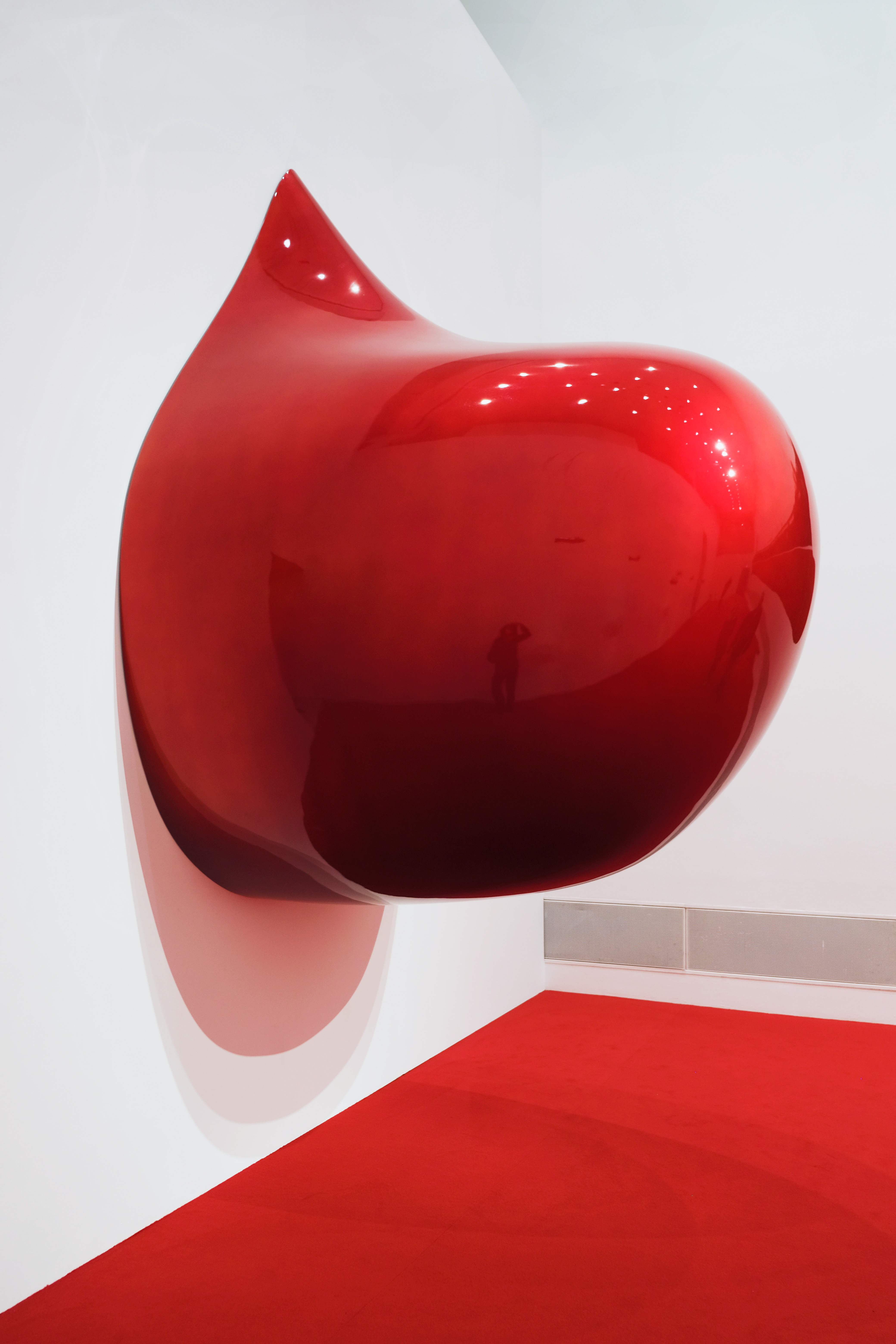
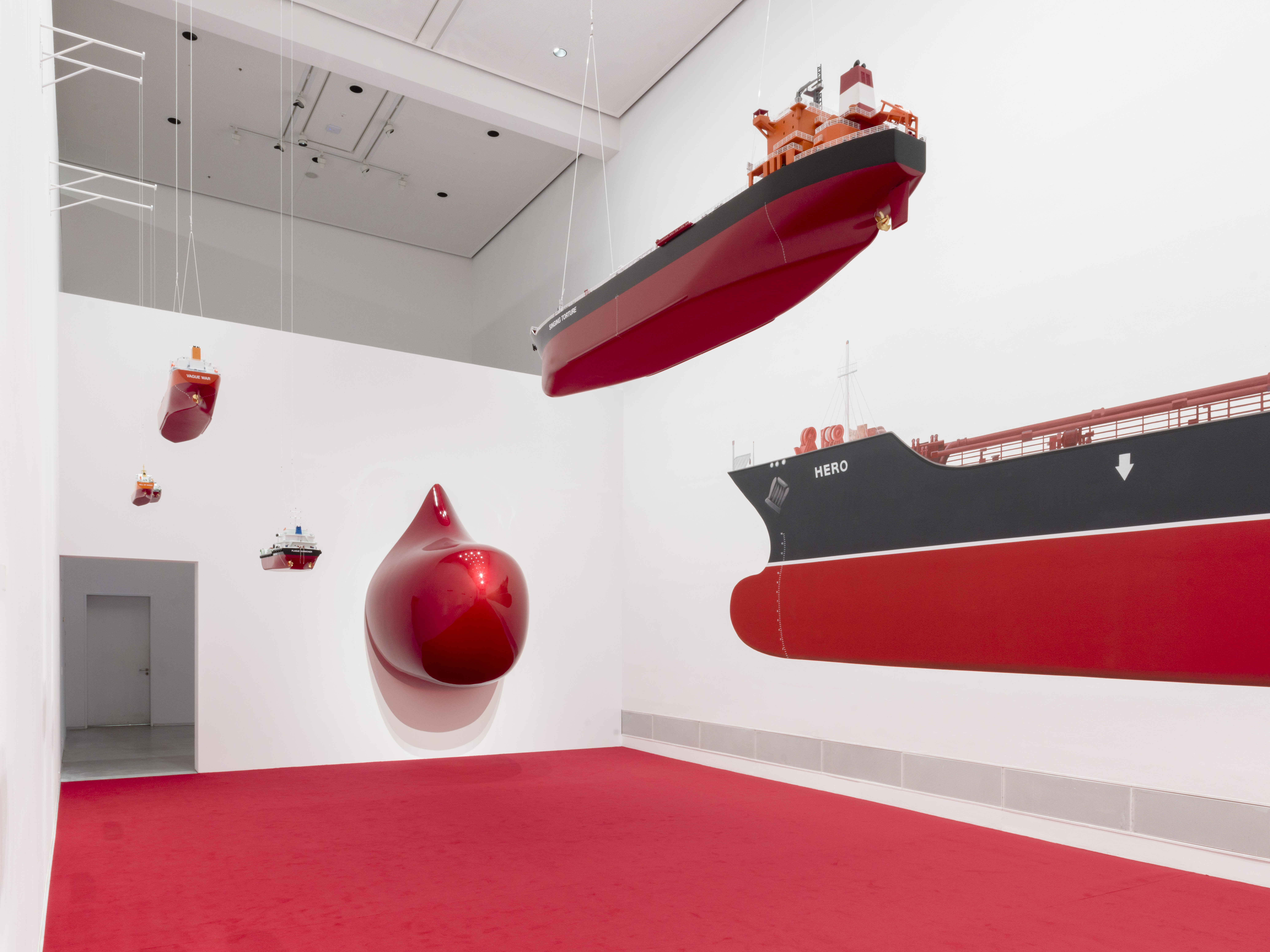
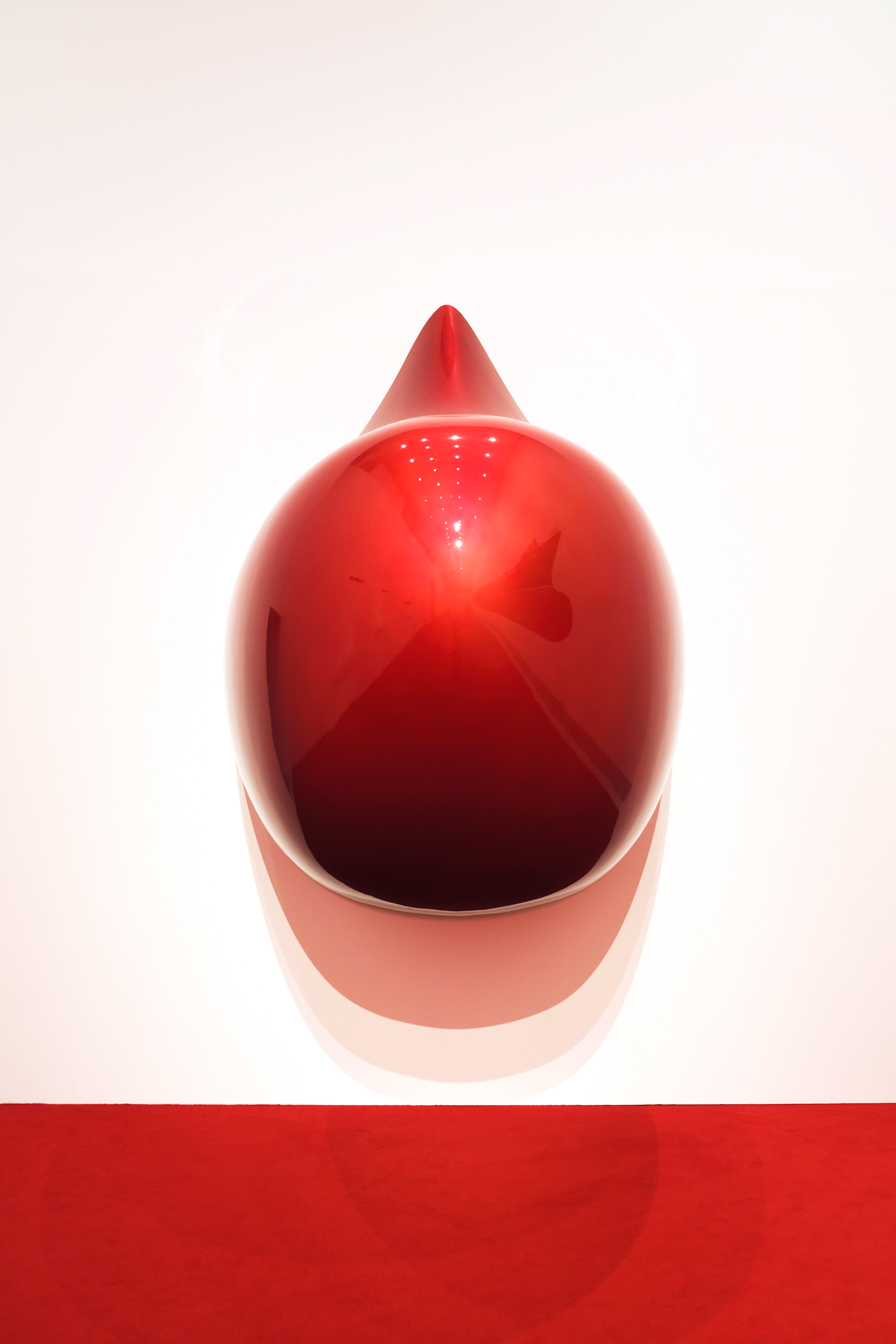
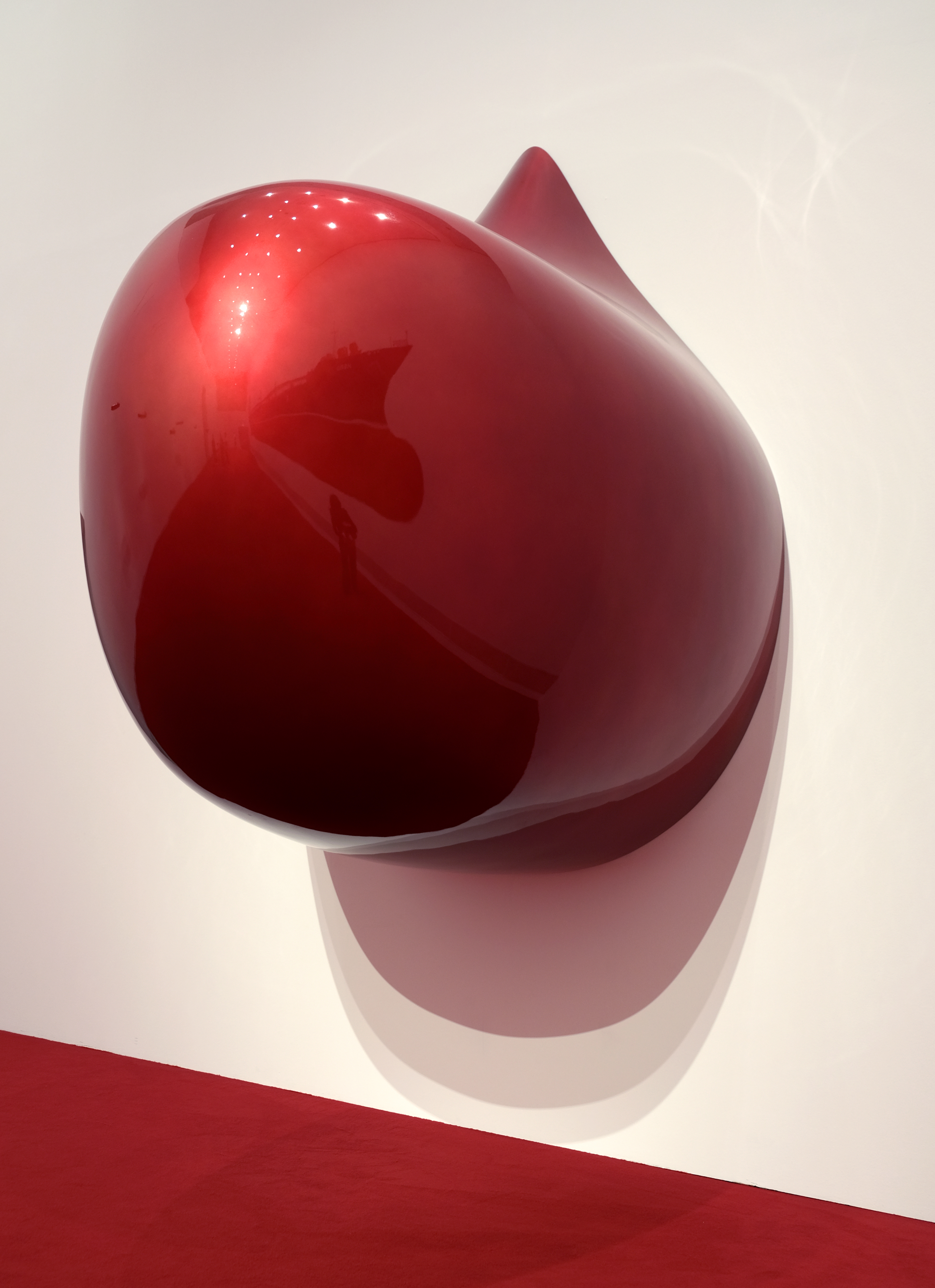

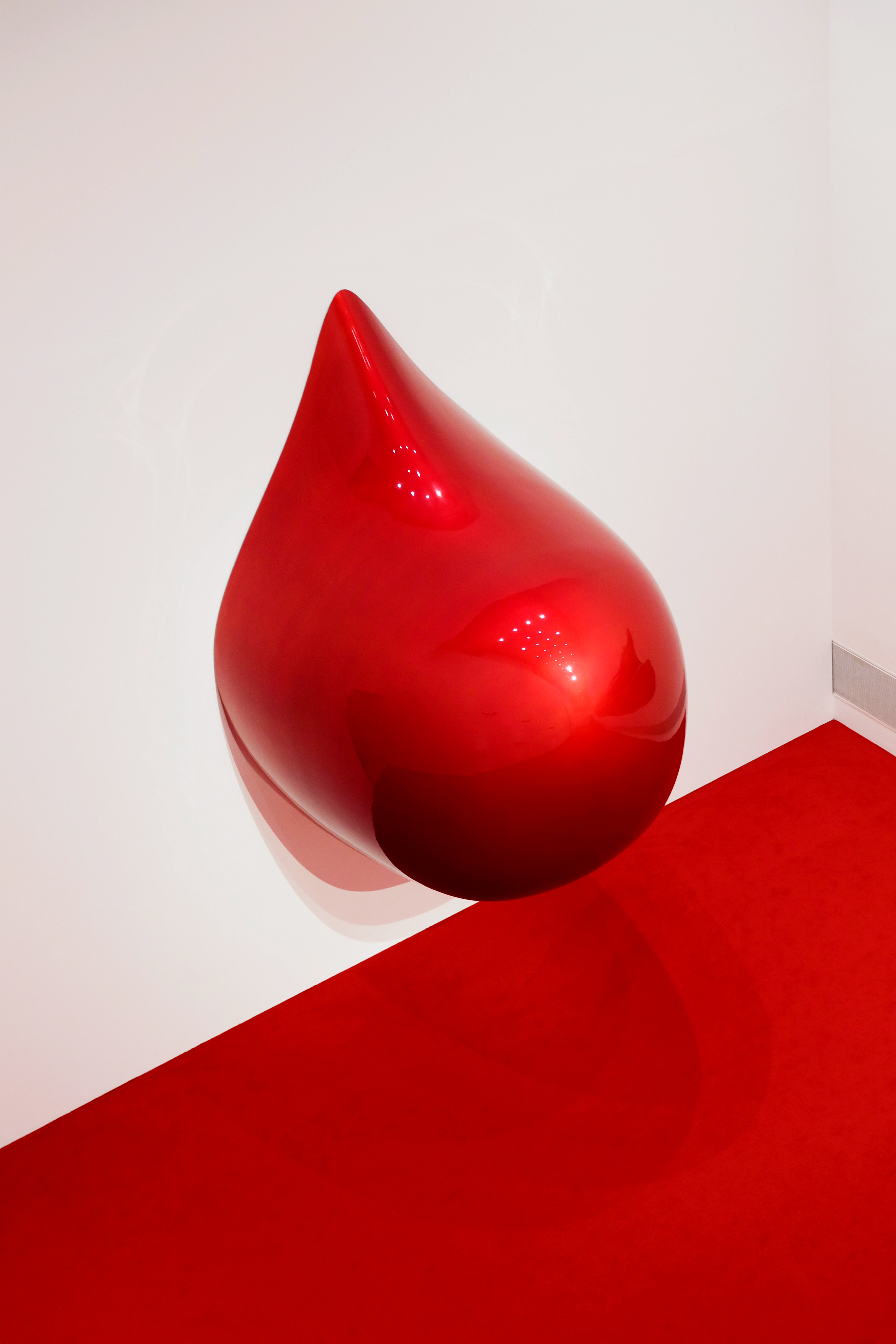
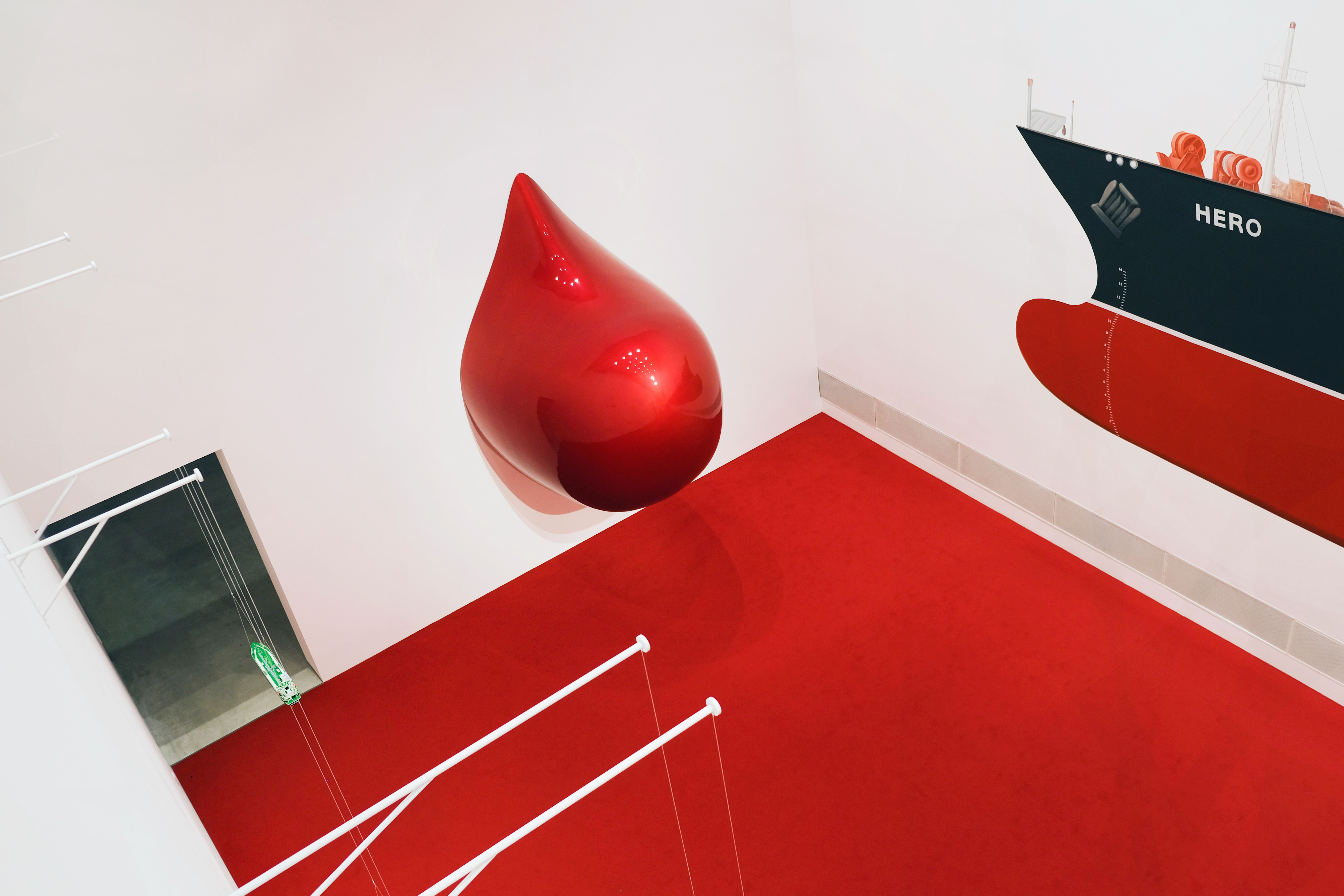
This replica of a tanker’s protruding bow bulb shows the part of the hull that engineers design to cut wave drag and trim fuel use by roughly 12 – 15 percent on very large ships. Hovering in vivid lacquered red, the form makes visible a piece of maritime hardware normally hidden just below the waterline.
By isolating the bulb from the rest of the vessel and positioning it at eye level, the artist turns a tool of efficiency into an ambiguous object—part muscle, part growth, part tumour. The sleek surface advertises speed and economy, yet it also points to the bigger cost of doing things faster: every gain in propulsion helps burn more crude and push more carbon into the atmosphere. The work invites a close look but refuses touch, echoing how petro-wealth offers apparent convenience while distancing us from its environmental consequences.
Commissioned by Berlinische Galerie 2025






This replica of a tanker’s protruding bow bulb shows the part of the hull that engineers design to cut wave drag and trim fuel use by roughly 12 – 15 percent on very large ships. Hovering in vivid lacquered red, the form makes visible a piece of maritime hardware normally hidden just below the waterline.
By isolating the bulb from the rest of the vessel and positioning it at eye level, the artist turns a tool of efficiency into an ambiguous object—part muscle, part growth, part tumour. The sleek surface advertises speed and economy, yet it also points to the bigger cost of doing things faster: every gain in propulsion helps burn more crude and push more carbon into the atmosphere. The work invites a close look but refuses touch, echoing how petro-wealth offers apparent convenience while distancing us from its environmental consequences.
Commissioned by Berlinische Galerie 2025